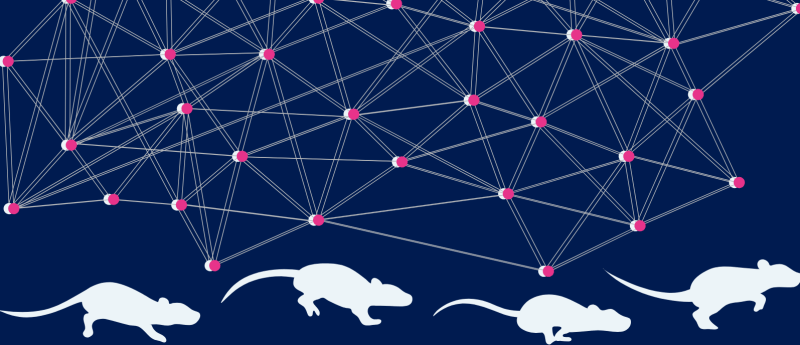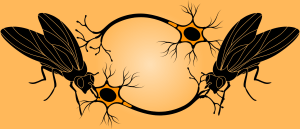When it comes to cooperation, biology and AI share similarities

Original story from the University of California – Los Angeles (CA, USA).
Research identifies shared neural mechanisms behind cooperation in both biological brains and artificial intelligence systems.
At a time when conflict and division dominate the headlines, a new study from the University of California – Los Angeles (UCLA; CA, USA) finds remarkable similarities in how mice and artificial intelligence systems each develop cooperation: working together toward shared goals. Both biological brains and AI neural networks developed similar behavioral strategies and neural representations when coordinating their actions, suggesting there are fundamental principles of cooperation that transcend biology and technology.
Why it matters
Cooperation is fundamental to human society and essential for everything from teamwork in the workplace to international diplomacy. Understanding how cooperation emerges and is maintained has profound implications for addressing social conflict and treating disorders that affect social behavior, as well as for designing better AI systems. Cooperation plays a vital role in enhancing individual fitness and promoting group survival, whereas its breakdown often leads to detrimental social conflict and instability.
As artificial intelligence systems become increasingly sophisticated, researchers have found that both biological and artificial agents can exhibit similar behavioral strategies and neural representations, opening new possibilities for understanding how cooperative behavior emerges when artificial agents interact and whether such interactions are driven by neural network dynamics that resemble those in biological systems. This research provides the first direct comparison of cooperative learning between biological brains and artificial intelligence, offering new insights into one of the most important aspects of social behavior while advancing our understanding of how to create more collaborative AI systems.
What the study did
Researchers from UCLA developed an innovative behavioral task where pairs of mice had to coordinate their actions within increasingly narrow time windows (ultimately just 0.75 seconds) to receive rewards. Using advanced calcium imaging technology, they recorded the activity of individual brain cells in the anterior cingulate cortex (ACC) while mice performed the task. The team then created artificial intelligence agents using multi-agent reinforcement learning and trained them on a similar cooperation task in a virtual environment. This parallel approach allowed direct comparison of how biological and artificial systems learn cooperative behavior.
 To move or to stabilize? The neural circuitry underlying proprioception
To move or to stabilize? The neural circuitry underlying proprioception
A nervous system circuit in fruit flies toggles between supporting stabilizing body posture reflexes or dynamic voluntary action like walking.
What they found
Mice successfully learned to coordinate their action and gain mutual reward. Mice developed three key behavioral strategies: approaching their partner’s side of the chamber, waiting for their partner to arrive before nose-poking, and engaging in mutual interactions prior to making decisions. These behaviors increased substantially during training, with interaction behavior more than doubling as mice became more skilled at cooperation.
The research revealed that neurons in the anterior cingulate cortex encoded these cooperative behaviors and decision-making processes, with animals showing better cooperative performance having stronger neural representations of their partner’s information. Remarkably, when researchers inhibited ACC activity, cooperation decreased substantially, proving this brain region is essential for coordinated behavior.
The artificial intelligence agents developed strikingly similar strategies to the mice, including waiting behavior and precise coordination of actions. Both biological brains and artificial networks organized into functional groups that enhanced their response to cooperative stimuli, with partner-related information becoming increasingly important as coordination improved. When researchers selectively disrupted specific cooperation-related neurons in the AI systems, cooperation performance dropped dramatically, confirming that specialized neural circuits drive successful cooperation in both biological and artificial intelligence.
What’s next
The research team plans to investigate whether similar neural mechanisms exist in other brain regions involved in social behavior and examine whether understanding these fundamental cooperation principles could advance broader knowledge of how social behaviors develop and function. The parallel between biological and artificial systems suggests that principles derived from studying animal cooperation could inform the design of more sophisticated collaborative AI systems, while AI models could help researchers test hypotheses about brain function that would be difficult to examine in living animals.
“We found striking parallels between how mice and AI agents learn to cooperate,” concluded Weizhe Hong, the study’s senior author and professor in the UCLA Departments of Neurobiology and Biological Chemistry. “Both systems independently developed similar behavioral strategies and neural representations, suggesting there are fundamental computational principles underlying cooperation that transcend the boundary between biological and artificial intelligence.”
This article has been republished from the following materials. Material may have been edited for length and house style. For further information, please contact the cited source. Our press release publishing policy can be accessed here.